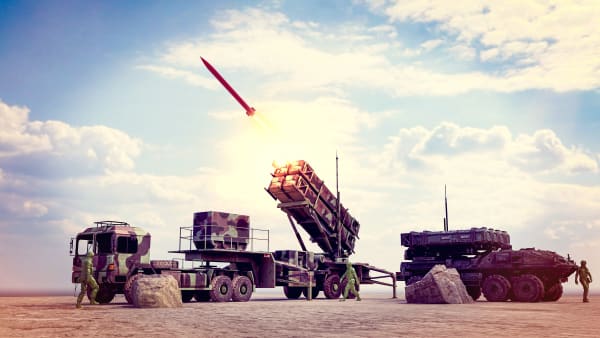THAAD missile defence system. The Terminal High Altitude Area Defence (THAAD) system targets incoming ballistic missiles in their terminal phase. Photo: Shutterstock
The British newspaper Financial Times reported on Tuesday that Israel faces an ongoing shortage of interceptor missiles for its air defense systems. The report was based on conversations with arms industry officials, including Israel Aerospace Industries (IAI) sources, former military personnel and analysts.
According to the report, the United States is working to “close gaps” in Israel’s air defenses and the expected deployment of the THAAD anti-ballistic missile system ahead of Israel’s retaliatory strike on Iran is part of this assistance. Both American and Israeli officials believe Israel’s strike could lead to an additional Iranian response.
“Israel’s munitions issue is serious,” said Dana Stroll, a former senior U.S. Department of Defense official with experience in the Middle East. “If Iran responds to an Israel attack [with another ballistic missile barrage], and Hezbollah joins in too, Israel’s air defenses will be stretched.”
Stroll added that U.S. aid is already stretched because of the war in Ukraine. “The US can’t continue supplying Ukraine and Israel at the same pace. We are reaching a tipping point,” she warned.
Boaz Levy, CEO of IAI, a state-owned company that produces the Arrow interceptors, stated that production factories are working continuously.
“Some of our lines are working 24 hours, seven days a week,” he admitted. “Our goal is to meet all our obligations.”
However, producing the missiles is a complex process – it is “not a matter of days,” Levy explained.
During the Iranian missile attack in April, Israel intercepted 99% of the launches with the help of the United States and other allies. In the latest attack, the interception rate was reportedly lower, possibly due to supply constraints. According to the Financial Times, nearly 35 missiles hit the Netavim base during the Oct. 1 aerial attack.
Analysts believe Israel’s defense establishment had to choose which areas to defend.
“During the October 1 attack, there was a sense the IDF reserved some Arrow interceptors in case Iran fired its next salvo at Tel Aviv,” said Ehud Eilam, a former Defense Ministry investigator. “It’s only a matter of time before Israel starts to run out of interceptors and has to prioritize how they are deployed.”
At the same time, despite Hezbollah’s repeated rocket barrages toward Israel since Oct. 8 of last year, the terror group has made only limited use of its medium-range ballistic missiles and precision-guided missiles.
“We are not seeing Hezbollah’s full capability yet,” said Assaf Orion, former head of the IDF’s Strategy Directorate, according to the Financial Times. “It has only been firing at around a tenth of its estimated prewar launching capacity, a few hundred rockets a day instead of as many as 2,000.”
Israel operates a three-layer air defense system. The Iron Dome intercepts short-range rockets and drones fired by Hamas in Gaza and Hezbollah in Lebanon. David’s Sling intercepts heavier, medium-range rockets from Lebanon, while the Arrow 2 and 3 intercept ballistic missiles, such as those fired by Iran in April and the beginning of October.
The THAAD system sits as a complement to David’s Sling, intercepting medium to long-range missiles.
Over the weekend, U.S. Secretary of Defense Lloyd Austin said the U.S. would deploy a THAAD interceptor system to Israel along with around 100 personnel.
Israeli Defense Minister Yoav Gallant recently told Cabinet ministers there was a large munitions gap when he assumed office and noted that Israel is “still dependent on American air munitions and aircraft.”
However, he said, “We are working with all our might to promote blue-and-white [Israeli] production and the development of [munitions] independence.”

































